Fulfilling our mission to protect and restore the Morro Bay estuary for people and wildlife requires a lot of hard work in the field. At the Estuary Program, that often entails doing research, restoration, and monitoring work out on the estuary and along the creeks that feed into it. Read on to see what we’ve been up to during the past month during this wet weather.
Eelgrass
February eelgrass restoration details
This past month, we have been busy taking advantage of some of the year’s lowest tides to replant eelgrass throughout the estuary. The weather didn’t want to cooperate with us, and we had to cancel a couple of harvesting and planting sessions due to some stormy weather and windy afternoons, but overall, the transplanting was a success.
We would like to say a huge thank you to the numerous volunteers, partners, and staff who went out with a good attitude each time, despite inclement weather. Their hard work made it possible to continue pursuing our goal of expanding the eelgrass acreage in the estuary. Thank you!
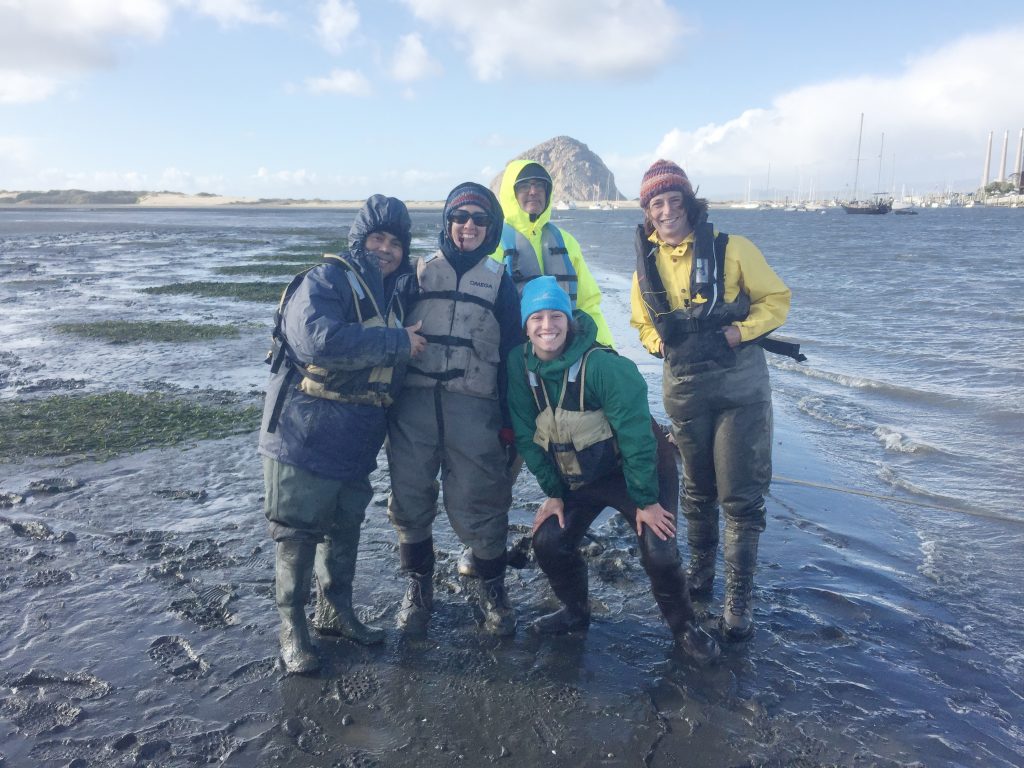
We harvested from healthy eelgrass beds near the front of the bay and replanted 675 eelgrass plants in the middle of the bay, one of the areas where eelgrass has declined drastically in recent years. We will continue to monitor and track the growth of these newly transplanted plots to see how they persist over the coming year.
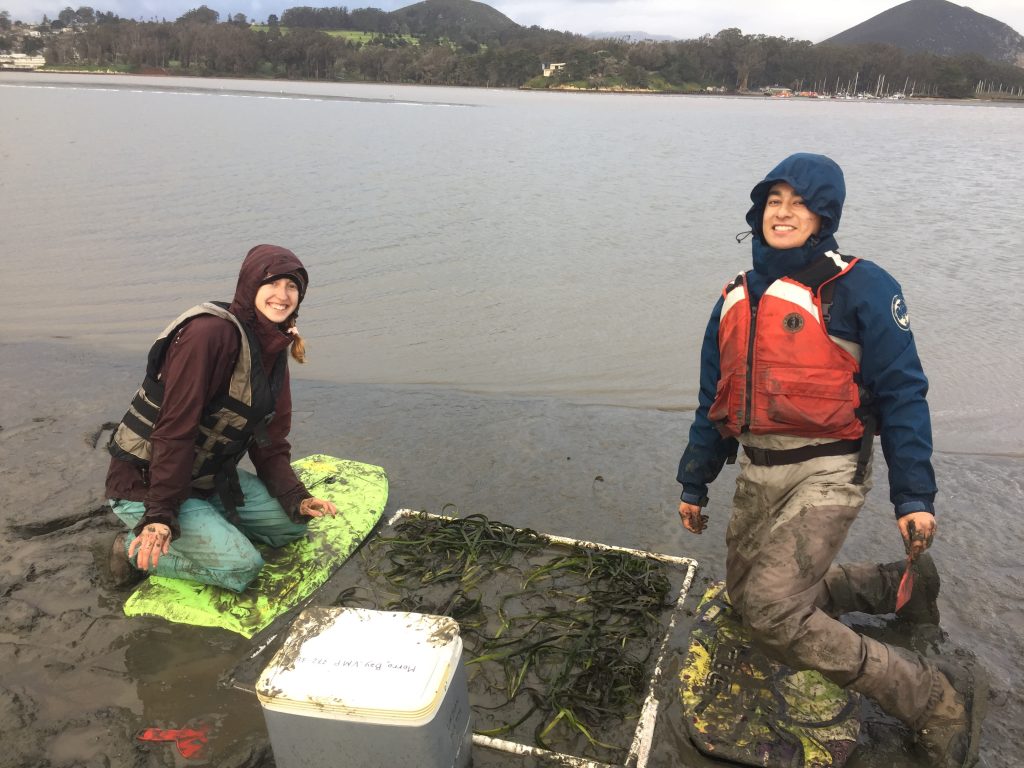
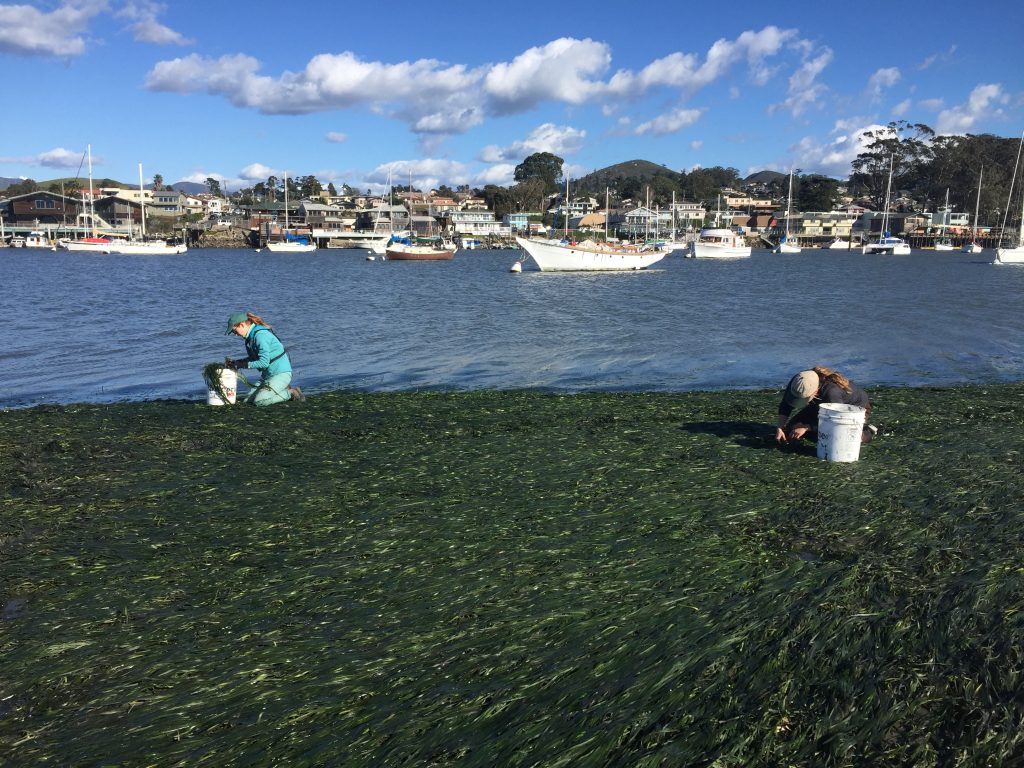
With two successful rounds of eelgrass transplanting this month, we replanted multiple sites throughout the bay. We have one remaining eelgrass restoration effort this year, which will take place in March.
Thank you to the California Department of Fish and Wildlife Duck Stamp program and the Black Brant Group for providing funding for the restoration efforts. Tenera Environmental staff also played a key role in the success of these planting efforts.
More information on eelgrass
To read about past eelgrass restoration work and the factors that affect eelgrass in the bay, check out these blog posts. If you are interested in volunteering to help with eelgrass in March, please fill out our volunteer form at MBNEP.org/volunteer.
Creeks
Rain totals
The rain clouds have kept on giving this month, making for some very happy green hills and healthy creeks. We received 5.86″ of rain in February at the gauging station on Chorro Creek at Canet Road. This brings the total for this location up to 15.09″ for the water year, which runs from October 1 through September 30. The Central Coast has a lot of complex microclimates—a different rain gauge just a few miles away at CalPoly received 7.45″ of rain in February. That gauge has received 19.9″ of rain for the 2019 water year, which runs from October 1 to November 30. Overall, according to PG&E Meteorologist John Lindsey, rain gauges were about 134% of normal levels for the rain year, which runs from July 1 to June 30, by mid-February.
More wet weather means more data
All of the creeks in the Morro Bay watershed are flowing, even creeks that don’t flow for most of the year, such as Warden Creek and Walters Creek. This has meant lots of monitoring activity between storms as we take advantage of the higher than normal flow conditions to get more data.
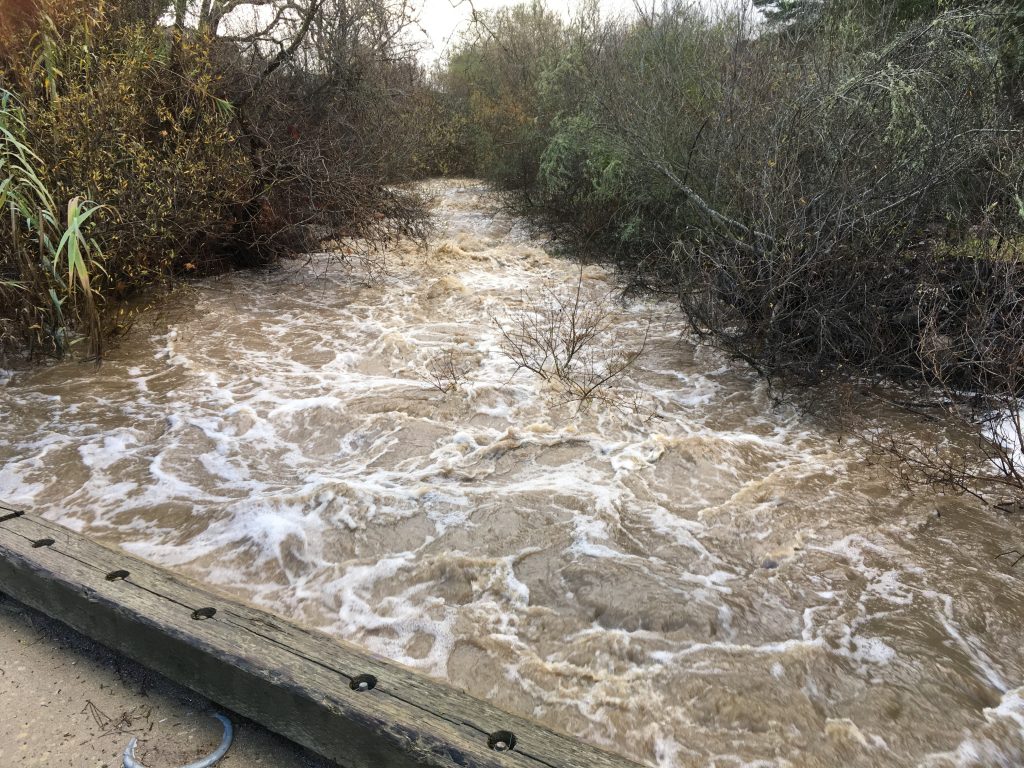
Sediment sampling
When it isn’t stormy and the creek is running at its normal rate and level, very little dirt gets moved from the watershed out into the estuary. A large majority of the sediment that enters the estuary gets transported to the bay in brief bursts a few hours after a good rain storm occurs. During these brief windows of time, things change quickly and the creek can go from a trickle to a river in no time at all.
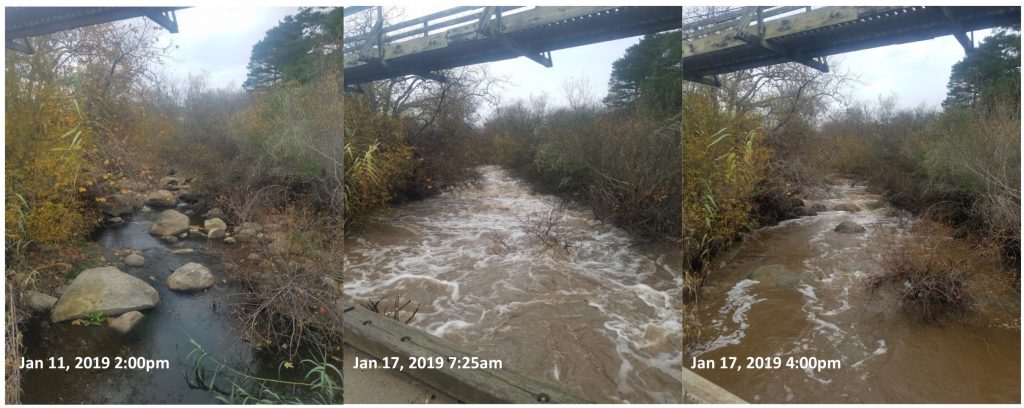
From mid-January to mid-February we were very busy monitoring the sediment concentrations in Chorro Creek. Every storm event during this period, we were out there. We use an automatic water sampler that collected a creek sample every 30 minutes for 11.5 hours. In total, we deployed our sampler over a dozen times and successfully captured the changes happening as the water levels rose and dropped.
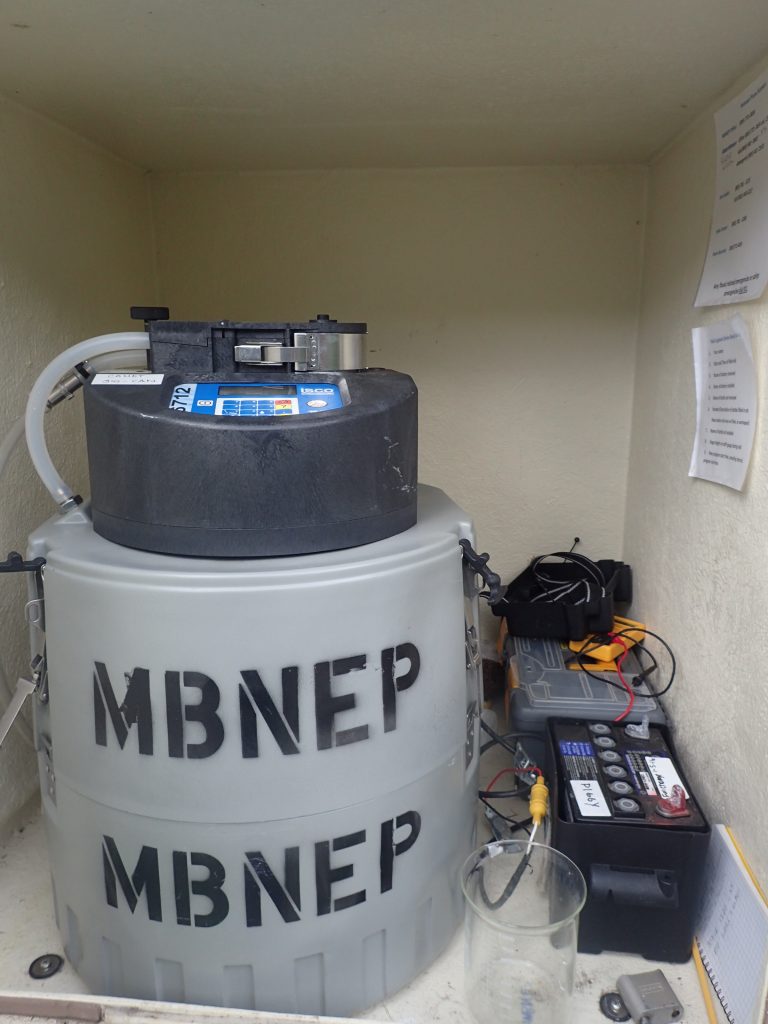
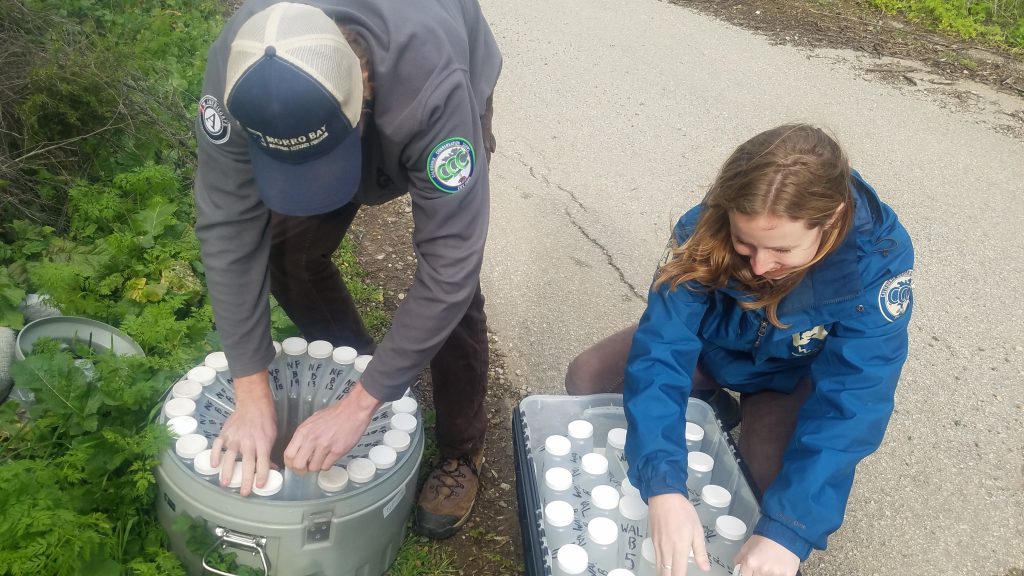
24 bottles fit in the lower portion of the ISCO and get filled every 30 minutes. Here, AmeriCorps Watershed Stewards Program members, Doug and Melia, work on switching out a set of full bottles for a set of empty bottles. We bring the full bottles back to our lab space at Cuesta College for processing. To learn more about how and why we process sediment, read this blog post.
Help us protect and restore the Morro Bay estuary!
- Come see S.L.O.P.E.’s show Flowing Estuary to Living Sea, at the Morro Bay State Park Natural History Museum now through March 31, 2019. A portion of proceeds from art sales will benefit the Morro Bay National Estuary Program and the Central Coast State Parks Association. We hope to see you there! On Saturday, March 2, you can even meet the Plein Air painters in person. Just stop by between 1:00 and 3:00 p.m. and say hello.
Watch the video below for a preview of more artwork from the show.
- Donate to the Estuary Program today and support our work in the field, the lab, and beyond.
The Estuary Program is a 501(c)3 nonprofit. We depend on funding from grants and generous donors to continue our work. - Support us by purchasing estuary-themed gear from ESTERO. This locally owned and operated company donates 20% of proceeds from its Estuary clothing line and 100% of Estuary decal proceeds to the Estuary Program. Thank you, ESTERO!
- Purchase items from the the Estuary Program’s store on Zazzle. Zazzle prints and ships your items, and the Estuary Program receives 10% of the proceeds. Choose from mugs, hats, t-shirts, and even fanny packs (they’re back!) with our fun Estuary Octopus design, our classic Estuary Program logo, or our Mutts for the Bay logo.
Thank you for your support!